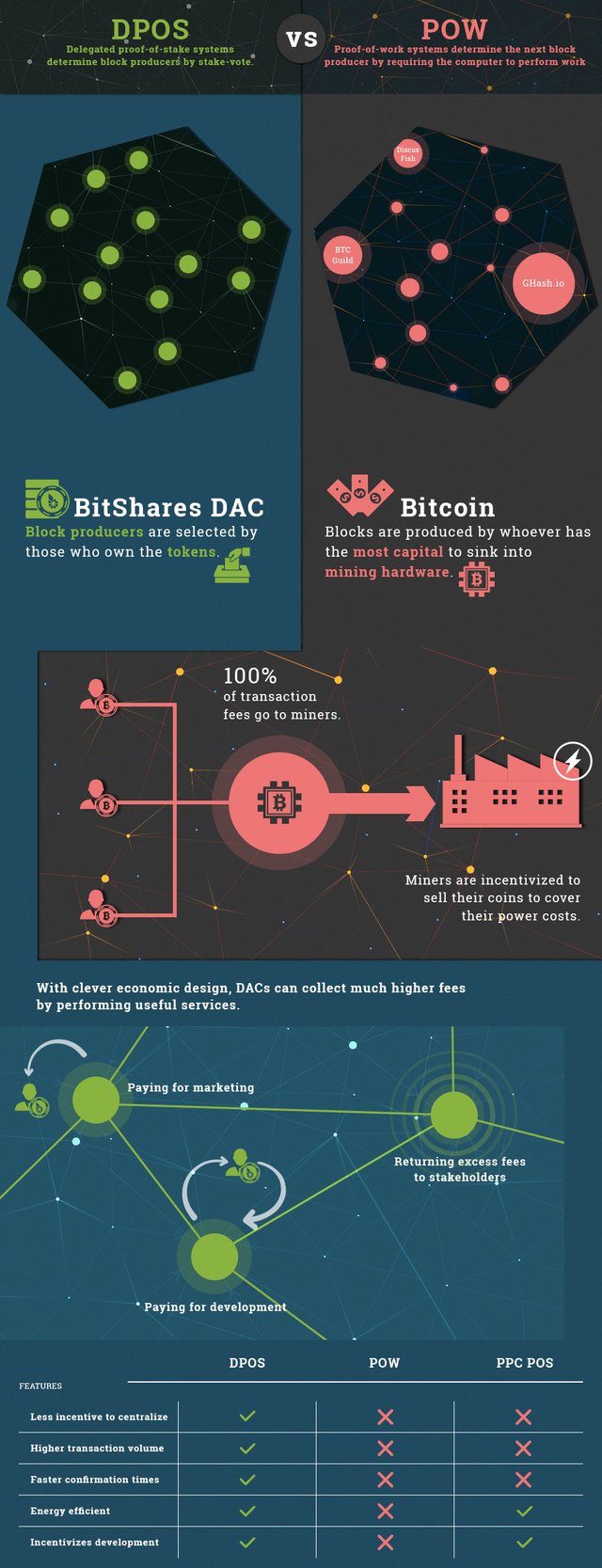Part 3: DPoS
“Besides, 10 minutes is too long to verify that payment is good. It needs to be as fast as swiping a credit card is today” - Dan Larimer
Dan Larimer, the creator of Both Bitshares and Steem, believed that Bitcoin’s design was inefficient and costly and that if it wasn’t able to handle VISA-like transactions, then it would be very difficult to achieve mass adoption.
A few years later, Dan Larimer successfully created the first-ever decentralized exchange, now considered to be the gold standard of decentralized exchanges, Bitshares. Initially, he introduced Bitshares ProtoShares, which was an upgradable Bitcoin clone intended to encourage early adopters to participate in the mining and trading of the tokens. The first Protoshares block was mined on November 5th, 2013.
It didn’t take long for Larimer to realize that the concept of mining was inherently flawed. He claimed that mining would eventually lead to a centralization of hashing (Required to mine blocks) power within the network, especially in places that offered cheap electricity. He also believed that the barrier to entry was too high for the average individual wanting to mine, since the resources required were too costly. This led to the introduction of a new method for securing the Bitshares network, referred to as Delegated Proof-of-Stake.
The Beginning
Dan Larimer revealed Delegated Proof-of-Stake (DPoS) on November 30th, 2013. DPoS uses a voting process that involves Delegates. These delegates are put in place by stakeholders to validate network transactions, in other words, produce blocks. Participation in block production is free, removing the need for the overhead costs found in Bitcoin’s Proof-of-Work (mining) model. All a participant would need is a computer, the necessary stake, and a popular vote from the stakeholders within the network.
Can it scale?
DPoS is known for being able to scale transactions better than the traditional Proof-of-Stake and Proof-of-Work models. Bitshares averages 3,300 transactions per second, making it one of fastest performing blockchains to exist. This is achieved by eliminating the need for verification from multiple nodes (delegates) to consider a transaction confirmed. The reduction in confirmation time allows for transactions to scale at rates that can compete with traditional clearinghouses such as VISA or Mastercard.
Is it secure?
DPoS has security measures to ensure that all block producers signing blocks are being honest. If a block producer failed to secure the next block, they would not get paid and their slot would be skipped to the next available block producer. A block producer would also not be able to sign an invalid block without confirmation from other delegates.
As an added security layer, DPoS blocks can’t be validated without first including the hash (signature) of the previous block. This makes it difficult for bad actors to manipulate block production, since it would require them to have the original hash of every block produced. Under the DPoS model, the longest chain is the original chain. This means it is nearly impossible for a bad actor to replicate an alternative chain that is just as long, and that deviates from the original chain.
Lastly, all fees go into a fund which is distributed among delegates who successfully secure the network. Each block producer is entitled to a percentage of the payout at the end of the payment round. Rather than competing with miners worldwide, this method encourages block producers to co-operate with one another instead.

Governance
The intention of this model is to place stakeholders in complete control of the network, since they have the most to lose. This democratic approach encourages network participation for the overall good of the community. By allowing everyone to have a say, we achieve the true decentralization that is expected from the Bitcoin network.
In the next post, I will be diving into what Smart Contracts are and how they are useful to businesses seeking to build on top of the blockchain.
Note: The intention of this series is to simplify Blockchain technology for those who are new to this market. I will do my best to avoid lengthy and super technical details that create confusion. I hope that I am able to help, so feel free to chat me up. I also want to encourage blockchain enthusiasts or lovers of any kind who have suggestions on my descriptions to help me edit this post. I can only hope these posts will encourage others to do their own research before investing in this space.